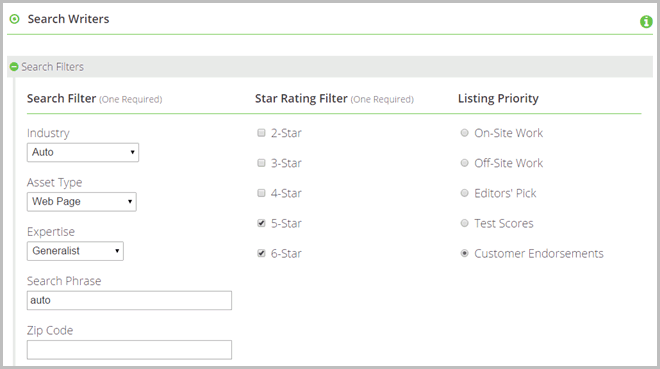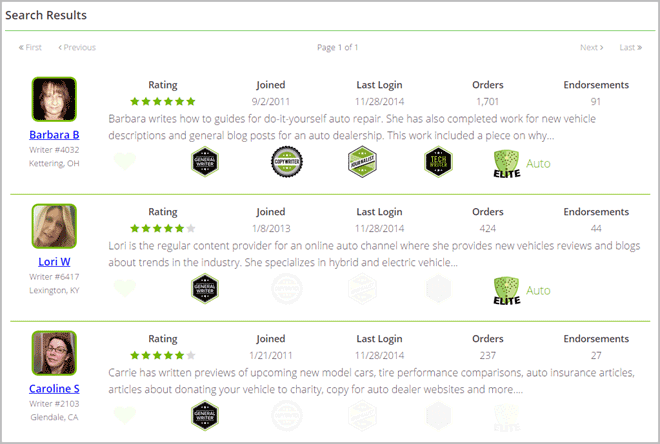Content Strategy & Checklist
When it comes to your organic ranking within search engine results, the quality of your content is absolutely everything. However, for those new to SEO, working keywords into web copy can feel daunting. Your SEO roadmap should provide you with a better understanding of how to organize keywords and content in a way that attracts new customers, while also attracting links and references over time.
Segmenting Content by Business Model
Planning your content strategy around your business is the first step in the planning process, and will help define the tabs you’ll use to track your optimization efforts.
For example, if you serve a specific area or specific areas (franchise), you’ll likely have the following tasks in your content strategy:
- Optimization strategy for main Locations or Service Areas page
- Optimization strategy for state pages
- Optimization strategy for region pages
- Optimization strategy for city pages
- Optimization strategy for individual property pages
If your business includes e-commerce, you’ll likely want to work the following list into your content strategy:
- Optimization of category pages
- Optimization of secondary category pages (canonical strategy)
- Optimization of secondary fields for CSE‘s (don’t give Amazon your SEO)
- Optimization of product detail pages
- Blocking search result pages (SRP) using robots meta tag
- Optimization of seasonal content pages (back to school, Cyber Monday, etc)
Or you’re a brand like SKECHERS, Walmart, or Target, you might have both strategies at play, and you’ll have to prioritize the one that’s most important to the business (online or offline sales?). Lead generation strategy can be somewhat less complex depending on whether you’re targeting businesses (B2B) or consumers (B2C), where both require different conversion experiences and some serious psychology.
Next: Segment by User Intent
Once you’ve segmented your content according to your business model, you’ll have the opportunity to break it up into three main categories by asking the following questions:
- Is the purpose of this page to attract new customers or revenue?
- Is the purpose of this page to attract links or references?
- Is the purpose of this page to provide company or site information (privacy, site map, etc)?
Based on the above, you might end up with two new tabs in your SEO roadmap: Sales Content and Marketing Content. The third item, Informational Content, is not going to be content optimized with keywords since it doesn’t attract new customers or links. For example, you won’t be adding keywords to your contact page, About Us page, privacy policy, site map, or terms and conditions.
Examples of Content by Type
Below are links to specific examples of the content discussed above to give you a better idea of how to organize your own content. Note that these pages don’t necessarily represent how your specific page should look, nor do they contain all of the elements discussed on this page.
- Local SEO: Main Locations or Service Areas page
- Local SEO: State page
- Local SEO: Region pages
- Local SEO: City pages
- Local SEO: Individual property pages
- eCommerce SEO: Category pages
- eCommerce SEO: Secondary category pages (canonical strategy)
- eCommerce SEO: Product detail pages
- eCommerce SEO: Seasonal content pages (back to school, Cyber Monday, etc)
- Lead Generation: Selling page (inbound marketing software/solution/platform)
- Lead Generation: Marketing page (inbound marketing)
Get Help
Acquiring content is a three-step process requiring keyword research, writing, and optimization. It doesn’t take an expert to create great content, but it does require all three resources being on the same page with the above segmentation model so you’re talking to the reader with the right tone while using selling or marketing (depending on the goal of the page) principles.
Keyword Research
There are dozens of online tools that help with keyword research, but the most important will be your own web analytics, presuming there is data available to associate keywords to sales, leads or events. You can also gain insights from Google Webmaster Tools under Search Queries. However, this data is only useful if you’re optimizing an existing page or if your website has been live for awhile without keyword-specific content. Otherwise, you’ll likely be looking at empty reports.
There are also third party tools to help with the keyword research step. The tool we tend to use the most is SEMRush, which offers both paid and organic data you can aggregate and sort by frequency to get super focused semantic search terms. SEMRush runs around $100 a month.
If you can afford it, BrightEdge offers an incredible tool called Data Cube, which allows you to view the keywords specific to a competitor’s version of the exact page you’re writing. Again, aggregate multiple competitors and sort by the keywords that have the highest frequency to fully understand your target. Price for BrightEdge will depend on the number of keywords and competitors you want to track at once.
Content Writing
Once you absolutely know the top 3-5 keywords that are important to the page you’re writing (based on business model and user intent), you’ll want to assign the content writing to a trained copywriter.
Our preferred resource is Writer Access (disclaimer: affiliate link), where we can search a database of writers and select the resource based on reviews and other insights, and then pool resources into teams so we can handle writing at scale.
Example of a search we did to find a good automotive writer:

By refining our search to the specific industry, quality of writing experience, and type of content we’re interested in, we were able to find a number of copywriters who specialized in the type of content we were looking for:

Here’s that link again to Writer Access. We hope you enjoy the resource as much as we do.
Content Optimization
As much as we’d like to believe our writer will nail SEO right out the gate, it rarely happens, even with 6 star writers. Let’s face it, we’d much rather have better content than SEO in the long-run, and take on the SEO ourselves to get the best of both worlds. Though every so often you find a rockstar that can focus on users and SEO, it’s a diamond in rough scenario.
SEO focal points you’ll want to pay attention to at the page-level include:
- Optimizing page URLs – yoursite.com/your-keyword/
- Optimizing browser titles – the blue link in search results
- Meta description – the text under the blue link in search results
- Headline – the first line of text a user sees on your web page
- Subheadings – where you’ll apply the secondary keywords from research
- Illustrations and image file names, alt attributes, and schema coding
- Videos – if applicable, images can improve page stay and contain video markup
- Calls to action – Buy Now if e-commerce, Download Now if lead generation
- Cross-linking – give some PageRank love to other important pages
Other Content Strategy Considerations
By now, you should have a fairly basic idea of how to segment and organize your content. You know where to go for keyword research and writers, and have some focal points for optimizing the page itself. Everything discussed above would be managed in a spreadsheet for tracking purposes, with columns for each optimization criteria.
So now we get down to the actual tasks for your Content Strategy — the high level list of what is getting done, which may include the following:
- New sales content roadmap / taxonomy created
- Rewrite of existing titles and meta descriptions completed
- Used siteliner.com to identify and fix duplicate content issues
- New marketing content roadmap created (eContext questions filter)
- Content marketing calendar completed for at least one month
- Optimization strategy for search result page completed (SRP)
- Review cross-linking opportunities between parent and child pages
- Local: Locations main page identified and reviewed
- Local: Optimization strategy for city and regional landing pages
- Local: Optimization strategy for property landing page(PLP)
- eCommerce: Optimization strategy for categories
- eCommerce: Optimization strategy for individual product pages
More to Come
Our SEO Roadmap Team will do our best to expand on ideas on this page over time. For now, we hope we’ve changed your idea of what content optimization means as it applies to your search engine optimization strategy. Thanks for reading!
